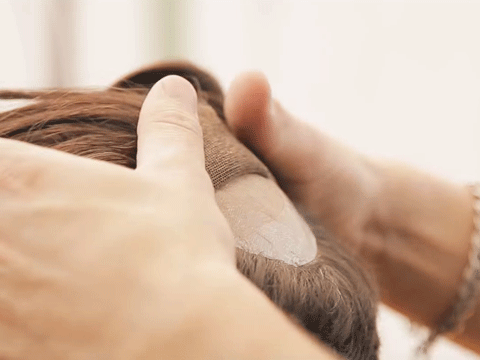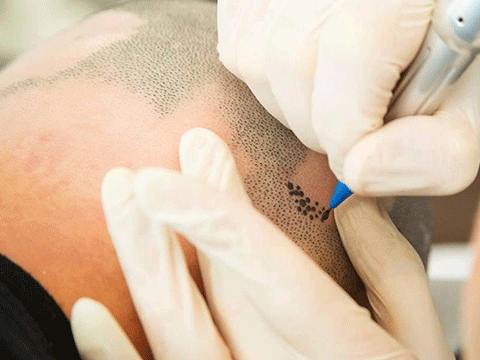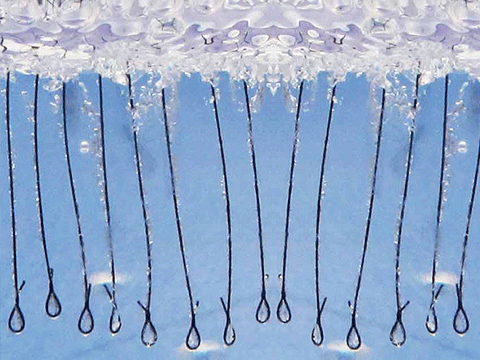Tratamentos Alternativos de Transplante Capilar
Os métodos de tratamento médico e não médico avançaram na
direcção das demandas e expectativas das pessoas com calvície.
Os mais comuns são próteses capilares, simulação capilar e
transplante capilar sintético. Além disso, estudos sobre
clonagem de cabelos ainda estão em andamento, mesmo que ainda
não tenham sido aplicados.

O que é uma prótese capilar?
A prótese capilar é feita com materiais sintéticos. Pode ser tingido e encurtado com diferentes opções de acordo com a estrutura e a densidade do cabelo da pessoa. É aplicado no couro cabeludo usando um adesivo especial. Como a prótese capilar é sintética e artificial, é possível encontrá-la e usá-la em toda a área sem pêlos com a densidade e qualidade desejadas. Como a prótese capilar não é uma solução médica e permanente, nenhum procedimento médico é realizado e você não sente dor. Você pode remover a prótese capilar a qualquer momento e parar de usá-la.- Para aplicar a prótese capilar, a área a ser implantada deve ser completamente raspada. E enquanto você usa a prótese, deve manter constantemente a área de crescimento do cabelo raspada.
- Como a prótese capilar cobre os cabelos na área aplicada e é aderida ao couro cabeludo com adesivos químicos, esse processo pode danificar os cabelos sob a prótese, se houver.
- Como o cabelo na prótese capilar não cresce como o seu cabelo normal, a imagem fica prejudicada à medida que o cabelo cresce.
- As pessoas que possuem próteses capilares devem ir periodicamente ao local onde elas colocaram suas próteses, removê-las e fazer os cuidados e o corte de cabelo.
- As próteses capilares têm uma vida útil e precisam ser substituídas em intervalos regulares

O que é pigmentação capilar, quais são as vantagens e desvantagens?
A pigmentação do cabelo ou a simulação do cabelo são semelhantes às aplicações de tatuagem e maquiagem permanente. É aplicado injetando corante sob a pele com dispositivos semelhantes e fazendo pontos apropriados da cor do cabelo da pessoa. Nesse processo, que leva aproximadamente 8 horas, a simulação do folículo piloso é criada com 10.000 ou mais pontos, conforme a necessidade. A pigmentação capilar não é uma aplicação médica. Pode ser aplicado no couro cabeludo e pode criar uma aparência mais densa no cabelo esparso, sem danificar o cabelo existente. Pode ser usado para reduzir a visibilidade das cicatrizes na área do couro cabeludo.- É adequado apenas para os pacientes que desejam que o cabelo existente apareça com mais frequência, mas que não desejam fazer o transplante de cabelo e para aqueles que estão constantemente se barbeando.
- Uma vez que é feito colocando corantes sob a pele, esse corante tem uma vida útil e precisa ser regenerado.
- Como tem uma cor constante, ela perde a harmonia das cores com o envelhecimento dos cabelos ao longo do tempo.
- Pode haver alterações na cor do corante devido à qualidade insuficiente do corante utilizado ou à reacção da pele da pessoa aplicada.

What is synthetic hair transplantation, what are the advantages and disadvantages?
Synthetic hair transplantation is a medical implementation which is similar to hair transplantation with artificial hair strands used in prosthesis. In the case of synthetic hair transplantation, the synthetic hair which is similar to the person's hair structure, is provided according to the need. It is attached to the scalp after it is replaced under the skin with special knots formed under the synthetic hair strands. It can be implemented to the patients whose donor area is unsuitable. Since it is not done by using one's own follicles, implantation can be done at the desired density.- Since the hair strands are synthetic, they cannot keep up with the natural processes such as hair growing and greying, so they turn into wigs in the long term.
- Since this practice carries an allergy risk, it should be implanted with intervals at least 1 month to see whether the patient will react beforehand.
- Since a synthetic hair is replaced under the tissue, it can lead to infection, cyst formation and inflammation.
- It was first banned in 1983 by the American Food and Drug Administration (FDA). This prohibition was nearly followed by 20 countries.
- Because of the fact that the transplanted hairs are synthetic, they cannot be fully integrated with the tissue and infection can often be seen at the junction points of the skin and synthetic hair.
- Since the knots of the hair strands do not have a 100% adhesion to the skin, due to the effects of environmental factors will cause loss and the hair will lose its density over time.
- Life time varies from person to person, but is between 8-10 years.
- Since hot air and hair styling products are chemical, it is very difficult to do the maintenance of the artificial hair.
- The hair follicles that are unacceptable by body can cause permanent damage to the skin.
- After synthetic hair transplantation, it is not possible to transplant hair to the people who have infection problems.
- Since synthetic hair has a lifetime and will be shed over time, hair transplantation should be done again after a certain period of time.

What is hair clonation?
The cloning process of hair grafts is the process by which certain cells found in the follicles taken from the patient are separated and replicated in the laboratory to be then transplanted onto the bald areas of the same patient. The hair follicles taken from a patient are reproduced and made to grow with the help of stem cells in the laboratory environment and then used for transplantation. The implantation of cloned follicles is usually performed onto patients who need a high number of grafts, who have or risk having in the future a weak or unsuitable donor area.- Laboratory studies and research are underway and hair clonation is still at an experimental stage.
- It is therefore not possible to make any assumption on its ultimate cost to the patients.
- Before the cloned graft hair transplantation becomes feasible, further studies and research are needed to also investigate the possible side effects. This will require clinical tests for years to come.
- Once these sides effects are found and clearly identified, the research will then be focused on finding the solutions and the timing for this all cannot be known at present.
- Being hair clonation at an experimental stage, it is not possible to say today for which type of hair loss or patients it'll be more suitable.
- It will take years for these studies to turn into a practice available to the public and even more years to become available also at affordable prices for everyone.
- At the present moment, seeing the results of this treatment is not suitable for patients who want to see results in the short term as it will take many years in the light of the studies.
- It is scientifically discussed as well that the cells used in the hair cloning process to regenerate the hair follicles, can mutate other cells of the patients thus increasing the risk of cancer.
- With this method, as the hair follicles encoded on the basis of DNA grow, the direction and angle of growth will depend entirely on external factors, so the result will be uncertain.